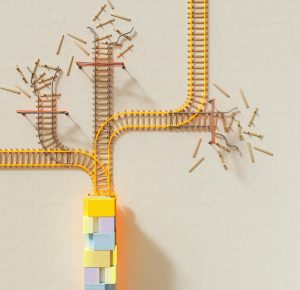The Challenge of Migrating Monoliths to Modern Architectures
In today’s fast-paced and competitive business landscape, having a modern architecture is crucial for organizations to stay ahead of the curve. With the rise of new technologies and software development practices, there has been a growing trend of migrating monolithic systems to a more modern and agile architecture. However, this process is not without its challenges. In this article, we will explore the difficulties that companies face when migrating monoliths to modern architectures and how to overcome them.
The Monolith vs. Modern Architecture
Before delving into the challenges of migrating monoliths to modern architectures, let’s first understand the difference between the two. A monolithic architecture is a traditional approach where the entire application is built as a single unit, with all components tightly coupled together. This makes it difficult to add new features or make changes without affecting the overall system. On the other hand, modern architectures, such as microservices and serverless, are designed to be modular and scalable, allowing for faster development and easier maintenance.
With the benefits of a modern architecture, more and more organizations are opting to migrate their monoliths. However, this task is not as straightforward as it may seem.
The Challenges of Migration
Lack of Understanding
One of the major challenges that companies face when migrating monoliths is the lack of understanding of the underlying system. Most monolithic systems have been in use for several years, and the developers who built them might not be available anymore. This makes it difficult for the current team to fully understand the architecture and its dependencies. Without a clear understanding of the system, it is nearly impossible to break it down into smaller components for a successful migration.
Legacy Dependencies
Monolithic systems are often built on legacy technologies and frameworks, making it challenging to migrate them to a modern architecture. These dependencies pose a significant risk to the success of the migration process. If the legacy dependencies are not resolved, they might cause the new architecture to become unstable, defeating the purpose of the migration. This can also result in additional time and effort spent on resolving these dependencies, prolonging the migration process.
Data Migration
Another major challenge when migrating monoliths is data migration. Most legacy systems have large and complex databases that are not straightforward to migrate. In some cases, the data might need to be transformed to fit into the new architecture, adding another layer of complexity. This can result in data loss or corruption if not handled correctly, which can have severe consequences for the organization. Data migration requires careful planning and execution to avoid any potential risks.
Skills and Resources
Migrating to a modern architecture requires a different set of skills and resources than those needed for maintaining a monolithic system. Without the right skills and resources, the migration process can be slow and inefficient, leading to delays and increased costs. It is crucial to have a team with the necessary expertise and experience to handle the migration effectively.
Challenges Met and Solutions
Proper Planning and Strategy
The key to a successful migration is proper planning and strategy. It is essential to have a clear understanding of the current monolithic system and the desired modern architecture. This involves identifying the dependencies and breaking down the system into smaller components for easier migration. A detailed strategy should be developed, outlining the steps and timeline for the migration.
Gradual Approach
Migrating a monolithic system in one go can be risky and challenging. It is recommended to take a gradual approach by breaking down the system into smaller components and migrating them one at a time. This allows for easier identification and resolution of any issues that may arise during the process.
Data Mapping and Transformation
Data migration can be made more manageable by mapping the data from the existing architecture to the new one. This ensures that the data is correctly transferred without any loss or corruption. In some cases, data transformation might be necessary, and it is essential to have a dedicated team for this task to ensure its accuracy.
Invest in Training and Resources
To successfully migrate to a modern architecture, organizations need to invest in training their team and hiring additional resources if needed. This ensures that the team has the necessary skills and experience to handle the migration effectively. It also ensures that the organization is equipped to maintain and improve the new architecture in the long run.
Conclusion
Migrating monoliths to modern architectures is a daunting task, but the benefits of doing so outweigh the challenges. It requires careful planning, the right skills and resources, and a gradual approach. With proper strategy, organizations can overcome these challenges and reap the rewards of a more modern, scalable, and agile architecture.










